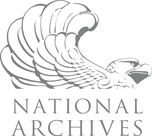 Web Content Display
Web Content Display
December 7, 1941 becomes "a date which will live in infamy"
In the early morning hours of December 7, 1941 Japan unleashed a devastating surprise attack on American military installations throughout the Pacific, thus bringing the United States into World War II. The Pearl Harbor naval base in Hawaii was the major target.
In just two hours, Japanese bombers destroyed or damaged twenty-one American naval vessels and over three hundred aircraft. The attacks killed 2403 military personnel and civilians, and shattered the U.S. Pacific Fleet.
After an afternoon spent monitoring the crisis, shortly before 5 PM, he began preparing a war message for Congress. Though drafted in haste, FDR’s words galvanized the nation. Below, with corrections written in FDR’s own hand, is the draft of that historic speech.
 Web Content Display
Web Content Display
Here are some questions to consider while reviewing President Roosevelt’s Address to Congress:
- What words did FDR initially select before changing the first sentence to include the word ’infamy’? Do you think the speech would have been as powerful and well received had he not made the change?
- Describe the tone that President Roosevelt uses in the speech.
- What evidence does FDR present to show that the attack on Pearl Harbor came as a surprise? What evidence does he present to show that the attack was premeditated and planned well in advance. How convincing do you find these arguments to be?
- By what authority is the President taking action? What does he say is at stake?
- Why is the President giving this address before Congress? Why is he asking the Congress to declare war on Japan? What prevents him from just doing it himself?




